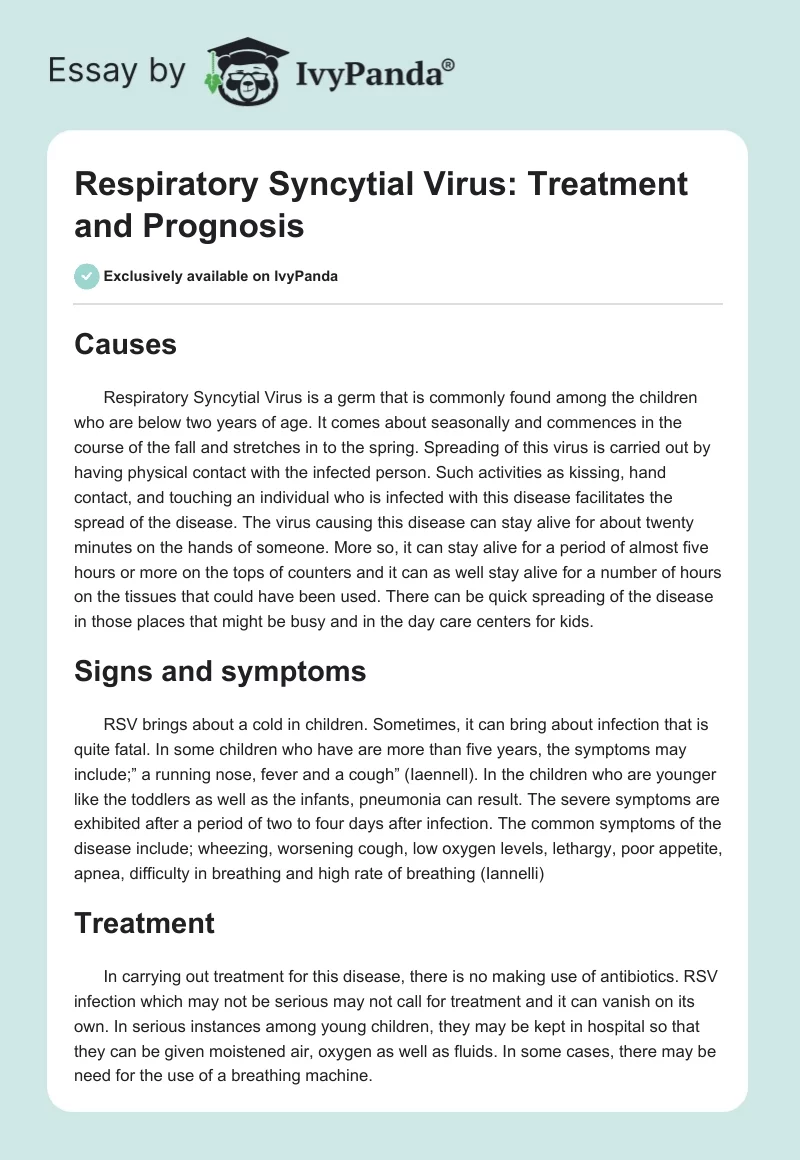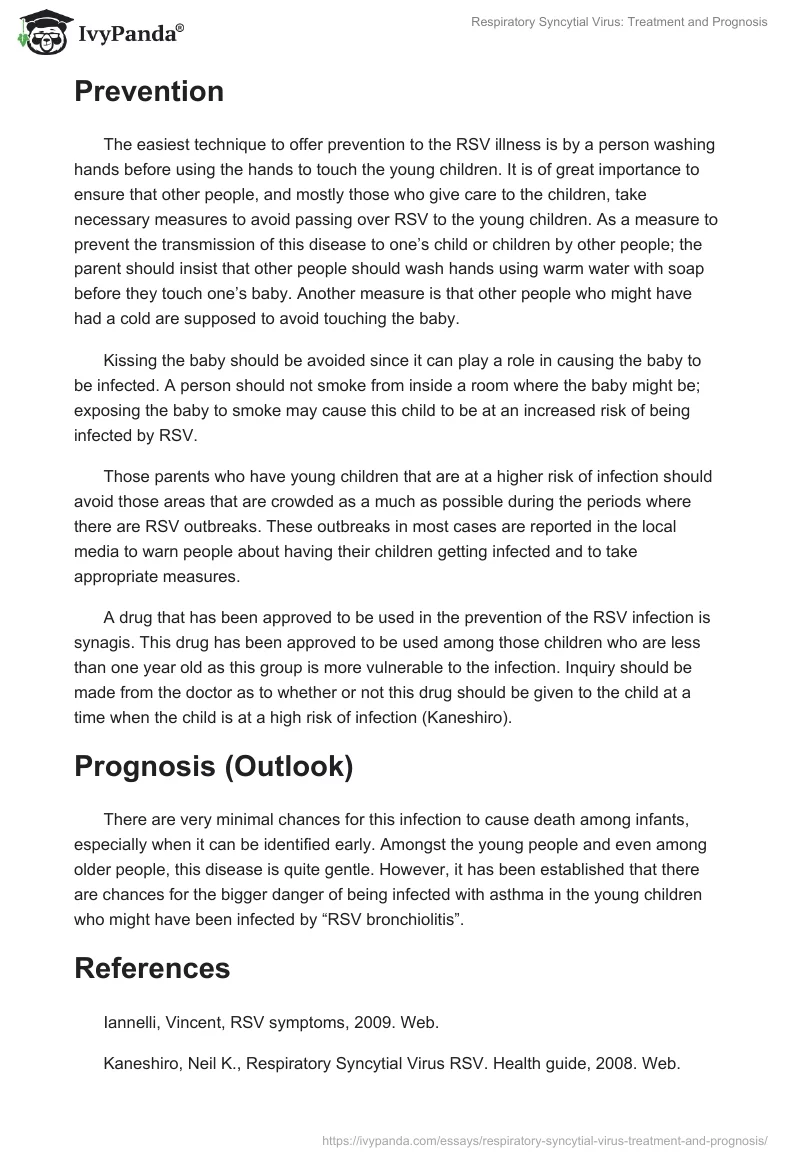Causes
Respiratory Syncytial Virus is a germ that is commonly found among the children who are below two years of age. It comes about seasonally and commences in the course of the fall and stretches in to the spring. Spreading of this virus is carried out by having physical contact with the infected person. Such activities as kissing, hand contact, and touching an individual who is infected with this disease facilitates the spread of the disease. The virus causing this disease can stay alive for about twenty minutes on the hands of someone. More so, it can stay alive for a period of almost five hours or more on the tops of counters and it can as well stay alive for a number of hours on the tissues that could have been used. There can be quick spreading of the disease in those places that might be busy and in the day care centers for kids.
Signs and symptoms
RSV brings about a cold in children. Sometimes, it can bring about infection that is quite fatal. In some children who have are more than five years, the symptoms may include;” a running nose, fever and a cough” (Iaennell). In the children who are younger like the toddlers as well as the infants, pneumonia can result. The severe symptoms are exhibited after a period of two to four days after infection. The common symptoms of the disease include; wheezing, worsening cough, low oxygen levels, lethargy, poor appetite, apnea, difficulty in breathing and high rate of breathing (Iannelli)
Treatment
In carrying out treatment for this disease, there is no making use of antibiotics. RSV infection which may not be serious may not call for treatment and it can vanish on its own. In serious instances among young children, they may be kept in hospital so that they can be given moistened air, oxygen as well as fluids. In some cases, there may be need for the use of a breathing machine.
Prevention
The easiest technique to offer prevention to the RSV illness is by a person washing hands before using the hands to touch the young children. It is of great importance to ensure that other people, and mostly those who give care to the children, take necessary measures to avoid passing over RSV to the young children. As a measure to prevent the transmission of this disease to one’s child or children by other people; the parent should insist that other people should wash hands using warm water with soap before they touch one’s baby. Another measure is that other people who might have had a cold are supposed to avoid touching the baby.
Kissing the baby should be avoided since it can play a role in causing the baby to be infected. A person should not smoke from inside a room where the baby might be; exposing the baby to smoke may cause this child to be at an increased risk of being infected by RSV.
Those parents who have young children that are at a higher risk of infection should avoid those areas that are crowded as a much as possible during the periods where there are RSV outbreaks. These outbreaks in most cases are reported in the local media to warn people about having their children getting infected and to take appropriate measures.
A drug that has been approved to be used in the prevention of the RSV infection is synagis. This drug has been approved to be used among those children who are less than one year old as this group is more vulnerable to the infection. Inquiry should be made from the doctor as to whether or not this drug should be given to the child at a time when the child is at a high risk of infection (Kaneshiro).
Prognosis (Outlook)
There are very minimal chances for this infection to cause death among infants, especially when it can be identified early. Amongst the young people and even among older people, this disease is quite gentle. However, it has been established that there are chances for the bigger danger of being infected with asthma in the young children who might have been infected by “RSV bronchiolitis”.
References
Iannelli, Vincent, RSV symptoms, 2009. Web.
Kaneshiro, Neil K., Respiratory Syncytial Virus RSV. Health guide, 2008. Web.


